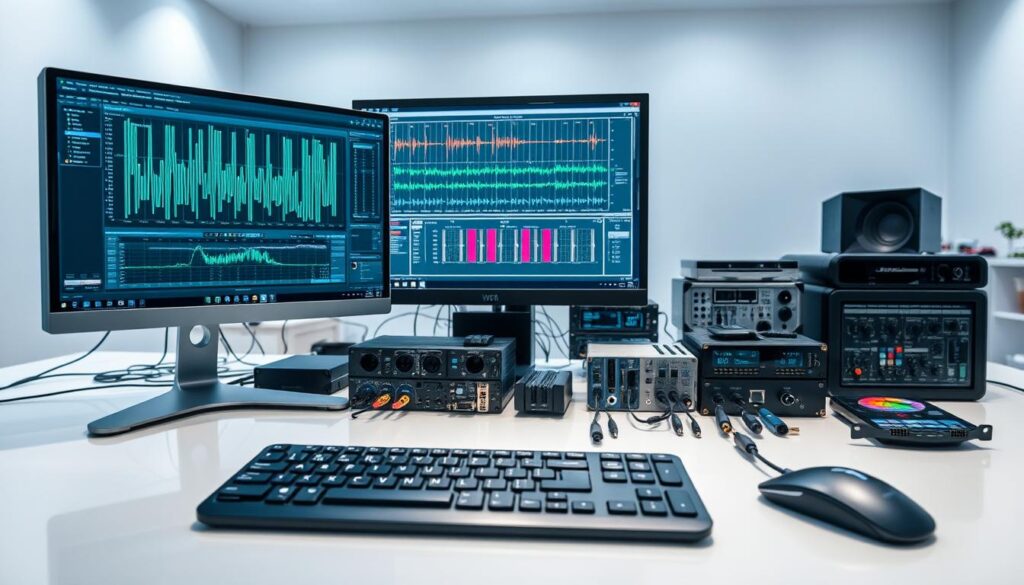Join Amazon’s Delivery Service Partner Program

The Delivery Service Partner path invites entrepreneurs to run an independent last-mile business that handles package routes, hires drivers, and manages daily operations.
Participants operate as owner-operators who follow established standards while receiving fixed monthly payments tied to volume. This model gives predictable cash flow compared with ad hoc gigs and lets a small business focus on execution, training, and safety.
Success depends on leadership, hiring discipline, and operational oversight. Owners handle scheduling, coaching, performance metrics, and cost control to keep routes on time and customers satisfied.
The program runs in select locations and requires a rigorous selection and onboarding path. The article will outline eligibility, interviews, tech and safety practices, and the realities of building a durable delivery business in today’s logistics industry.
What the Amazon DSP model is and who it’s for
The delivery service partner model lets local entrepreneurs run a standalone route-focused business that manages drivers, schedules, and daily operations.
How it works: Owners operate an independent company that contracts for steady package volume. The arrangement supplies route assignments, logistics tech, and on-road coaching so the owner can focus on hiring, training, and execution.
The model suits leaders with people-management experience and an interest in last-mile operations rather than passive investors. Successful operators emphasize safety, on-time metrics, and continuous improvement.
- Recruit, onboard, and coach drivers while enforcing quality and safety standards.
- Rely on provided routing tools and operational support instead of selling volume.
- Build teams from the local community for better retention and customer outcomes.
| Feature | Who it fits | Alternative |
|---|---|---|
| Independent route business | Full-time owners with ops experience | Part-time driving gigs |
| Provided route volume & tech | Managers focused on people & process | Owner-driver solo models |
| Performance & compliance standards | Leaders who scale by metrics | Flexible gig platforms |
| Local hiring emphasis | Community-rooted entrepreneurs | Franchise-style buying models (not applicable) |
Owners should expect daily priorities around staffing, scheduling, and route improvement. The application and financial review screen for readiness to run a durable delivery business.
Benefits the program provides to small business owners
A guaranteed flow of parcels lets owners focus on staffing, safety, and daily execution.
Built-in volume and a ready customer base remove the need to find new accounts. That stability lets owners concentrate on hiring, scheduling, and on-time performance.
Training, coaching, and logistics technology
Hands-on training and business coaching teach station workflows, people leadership, and cost control.
On-road support teams and routing tools help balance efficiency and safety, including planned breaks for drivers.
Vendor discounts, investments, and employee programs
Access to third-party discounts can lower costs for insurance, equipment, and fleet services.
Recent rate card increases and bonuses aim to improve owner economics, though local results vary by market and execution.
“Education and benefits like Next Mile and ACA-compliant options strengthen recruiting and long-term retention.”
- Healthcare, PTO, and early wage access tools support driver recruitment.
- Education stipends and 401(k) options help build a stable team and career paths.
- Vendor programs remain optional so owners choose what fits their business model.
| Benefit | What it covers | Owner impact | Notes |
|---|---|---|---|
| Built-in package volume | Route assignments & customers | Focus on ops not sales | Reduces customer acquisition costs |
| Training & coaching | Station workflows, leadership | Faster ramp-up, fewer mistakes | Includes on-road mentoring |
| Vendor discounts | Insurance, devices, uniforms | Lower operating expenses | Optional participation |
| Employee programs | Healthcare, PTO, education | Improved retention | Eligibility varies by role |
Bottom line: These supports provide a strong foundation, but success still depends on disciplined management of P&L, compliance, and quality.
Eligibility and preparation before you apply
Confirm location eligibility, then pull together a professional resume and proof of at least $30,000 in liquid assets.
Location, documents, and a clean inbox
Applicants must verify that their city is open for applications. They should have an up-to-date resume and bank statements showing at least $30,000 in liquid assets.
Use a fresh email address not tied to prior accounts to avoid processing conflicts with existing profiles.
Credit, motor vehicle record, and readiness
A strong credit profile matters. Lenders and insurers use credit scores for underwriting, fleet leasing, and startup flexibility.
Motor vehicle records for the owner and future drivers signal safety standards. Clean MVRs reduce insurance costs and hiring friction.
- Organize references and examples of hiring or team leadership.
- Research local wages, insurance, and station commute times.
- Confirm the ability to commit full-time hours and prepare basic financial projections and reserves.
| Requirement | Why it matters | Action |
|---|---|---|
| Location availability | Determines eligibility to apply | Check online portal and regional listings |
| $30,000 in liquid assets | Startup cushion and vendor requirements | Gather bank statements or investment proofs |
| Credit & MVR checks | Underwriting, insurance, driver safety | Review credit report and driving record; correct errors |
| Fresh email | Avoids account conflicts | Create new professional address for applications |
Tip: Thorough preparation shows professionalism. It shortens review times and improves chances of approval into the dsp program for a stable amazon delivery business.
How to apply to the amazon delivery service partner program
Applying takes preparation, patience, and clear documentation.
Applicants should block two to three hours to complete the online application and use a fresh email address to avoid account conflicts.
Background checks and timeline: The review process can take several months. Expect background, credit, and motor vehicle record checks as part of the vetting process.
https://www.youtube.com/watch?v=_kBwIZWxd50
Interview, NDA, station visit, webinar, and business plan
If advanced, candidates will interview, sign an NDA, attend a live webinar, and submit a business plan. A station visit lets them observe workflows and ask practical questions.
Offer stage and Future DSP onboarding
Selected applicants receive an offer and enter the Future DSP program for structured education and launch planning. That phase includes training, scheduling templates, and vendor guidance.
- Keep documents organized and reply quickly to requests.
- Use waiting months to refine hiring, training, and equipment plans.
- Prepare a preliminary vendor and equipment list and explore available discounts from partners.
Tip: Thorough, accurate responses and prompt communication speed the review and improve confidence in the final interview and onboarding steps.
Startup costs, revenue potential, and day-to-day operations
Startup costs and daily rhythms shape how quickly a route-focused business can scale from a handful of vans to a full fleet.
Common startup considerations and fleet ramp-up
Initial items include business formation, insurance, recruiting, uniforms, and fleet leasing. Many sources cite a low entry baseline near $10,000, but applicants must document at least $30,000 in liquid assets to meet program readiness and leasing requirements.
Annual revenue and profit ranges, and what influences them
| Metric | Range | Notes |
|---|---|---|
| Annual revenue | $1M–$4.5M | Market and fleet size drive top line |
| Annual profit | $75K–$300K | Depends on performance and cost control |
| Startup cushion | $30K required | Bridges payroll, fuel, and repairs |
Owner responsibilities: hiring, training, scheduling, and P&L
Owners must hire and train employees, build reliable schedules, and manage P&L with discipline. Fleet growth usually starts with a few delivery vans and expands as safety scores and retention improve.
- Use vendor discounts and standard processes to cut costs safely.
- Run daily huddles, safety briefings, and KPI reviews to catch issues early.
- Plan cash flow to cover payroll, fuel, and maintenance while income cycles through.
Tools, safety features, and technology that support DSP owners
Modern route planning blends traffic data and worker rest windows to keep runs efficient and safe. Owners get software that schedules two 15-minute rest breaks and one 30-minute meal break into each route. This time-aware planning helps manage pace and reduce fatigue.
Route optimization and break planning
Routing tools adjust stop order for traffic and customer time windows. They also add cushion time for heat, rain, or heavy neighborhoods.

VAPR AI and quicker, more accurate stops
VAPR (Vision-Assisted Package Retrieval) uses cameras and LED indicators to show the right package at each stop. That reduces sorting time and improves accuracy for customers.
Advanced vehicle safety systems
Modern fleets include blind spot warning, rear cross traffic alert, lane keep assist, adaptive cruise, and automatic emergency braking. In-vehicle cameras have cut accident rates by 48% since 2020 and sharply reduced distracted driving.
Climate readiness and weather supplies
Vehicles must have working A/C and heat. Units without climate control are pulled from use to protect drivers.
Owners receive winter kits—ice cleats, shovels, warm-up supplies, and emergency flashlights—and routes are adjusted for extreme conditions. Extra time is allotted for hydration and safe driving during hot weather.
How owners should use these tools: track incidents, coach drivers daily, and use analytics to lower risk. Technology supports safe operation, but it does not replace strong training and supervision.
Real-world challenges to plan for
Launching a route-focused business brings steady demand but also sharp operational realities. Applicants should plan for long selection windows, high turnover, and variable income while they build a reliable team.
Competitive selection and timelines
Competitive selection, long timelines, and driver turnover
Application reviews can take months and selection is competitive. Candidates should use that time to draft hiring plans, training outlines, and cash forecasts.
High driver turnover is common in last‑mile work. Structured recruiting, fast onboarding, and clear incentives cut churn and raise retention.
Income variability and control limits
Income variability, route control limits, and compliance duties
Profitability varies by market, fleet size, and performance scorecards. Owners must model conservative scenarios and hold cash reserves for payroll and repairs.
Route assignments are program-driven, so owners focus on controllables: staffing quality, dispatch discipline, and daily coaching.
Strict compliance with safety, labor rules, and recordkeeping is required. Daily inspections, incident logs, and maintenance records protect customers and reduce claims.
- Build an HR playbook with incentives tied to safety and quality.
- Forecast peak seasons, cross-train staff, and keep a bench of trained helpers.
- Use dashboards to track lateness, rescues, and defects, then fix root causes with coaching.
- Maintain transparent communication about goals and career paths to boost morale.
“Plan conservatively, invest in people systems, and keep reserves ready for the first critical months.”
Your next step toward launching a delivery service with Amazon
Start by confirming your market is open and gather core documents: an updated resume, a fresh email, and proof of $30,000 in liquid assets.
Block a quiet 2–3 hour window to complete the online application. Expect follow-up requests and checks for background, credit, and MVRs.
Prepare a concise business plan covering staffing, training, safety protocols, scheduling, and early cash flow before interviews and the NDA stage.
Schedule the station visit and webinar quickly, explore adjacent options like Amazon Flex and the Hub Delivery Program, and build hiring pipelines with local colleges and veteran groups.
Final note: success requires full-time commitment, disciplined management, and a safety-first approach so customers and employees see consistent results.



